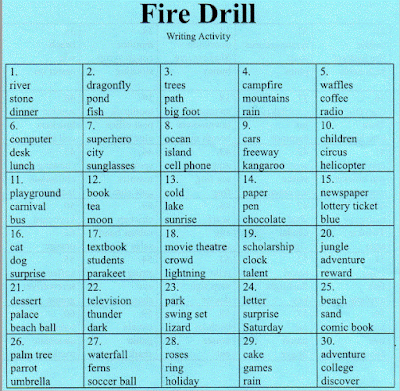Concentric Circles is a GATE strategy I wanted to
explore with my students this year. In my last blog, I explained what Concentric Circle are, and
how it can help students go deeper into concepts, and it allows students to
collaborate. Both times the students worked with the circles they use their
Language Arts anthology, however, it can be used in any content area. It
was definitely a learning experience for the whole class, including
myself.
What Worked
Concentric
Circles allowed the students to be somewhat creative while learning the
standard or just looking at the impact, a person has had on the world. First
of all, this is a great and engaging activity.
It was noisy, but if someone came into my room the students would not have noticed, and they were all crowded around their work (That is how I assess engagement). It was fun to watch them in action. Another aspect that worked was keeping is simple. The first time the students worked on concentric circles, they were given parameters of finding an example of figurative language, which would be their focus, and we picked one depth and complexity icon to use in all the circles. Keeping the activity simple at first was important, and I am really glad I did because it allowed the students to get familiar with what was being asked of them. I kept the example projected on the Smartboard, so students could reference it throughout the activity. The second time they were assigned the circles I asked them to use their personal experiences and opinions. Again it would help them get familiar and would allow them to start making deeper connections, which is my overall goal. Lastly, student groupings were also kept on the smaller side; no more than four people in a group. They all have to write their ideas onto the circles and collaborate on their focus, which is the center circle. So anywhere between 2-4 students will work best for this activity. Overall, keep the parameters simple at first, and keep the groups on the small.
Adjustments
With
anything, adjustments need to be made, so that it can work for the
students.
This
group of students is extremely artistic, and I needed to change the look of
the circles. Instead of being drawn circles on a piece of paper I had the
students cut colored pieces of paper and layer them any way they wanted. The
kids responded to this change. However, the option to draw the circles will
still be offered to the groups. The next adjustment I will be making is which
students are in the groups. They need to heterogeneous yet harmonious. I want
the kids to be at different levels academically, so they can build on each
other’s ideas, but personality-wise they should be compatible. Some of the
groups were great together, but others would argue because of personality
clashing. Some of the passive students in the group would let the stronger
personalities take over. With that being said, when building these groups it
will be done very purposely. These changes should help the activity more smoothly.
Look-Fors
The biggest Look For is student conservation. Listening to
their conservation will help me to understand where their ideas are heading,
but also make sure they write down their good ideas and coach them when they
are unsure. I also listen when they misunderstand the instructions, and make
clarifications. This happened with one group where they forgot they needed a continual reference to their center circle. They were treating the circles more
like a GATE frame, but the mistake allowed me to clarify with them and remind
the class. The next time I will take anecdotal notes and share what was said,
and use that information to run a Socratic Seminar.
Concentric Circles are a worthwhile GATE strategy to try out
in your classroom. It can be used in any content area, and it offers so much
for the students. The kids will work collaboratively, learn how to have
productive and engaging conversations, and look at different parts of life or
curriculum with more depth. Again, I highly recommend this strategy in any
classroom.
Diana Eberle
Diana Eberle





















